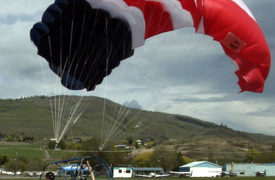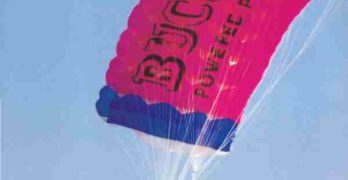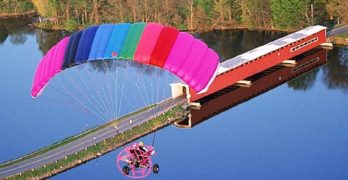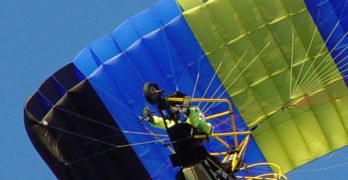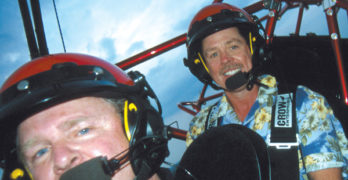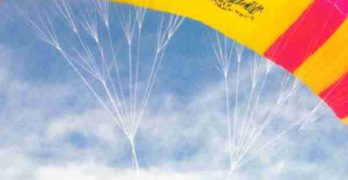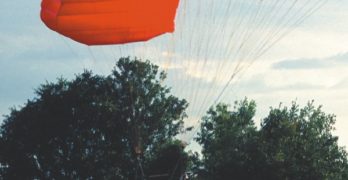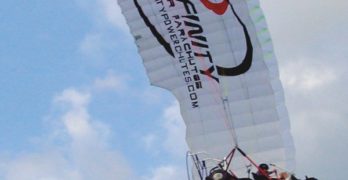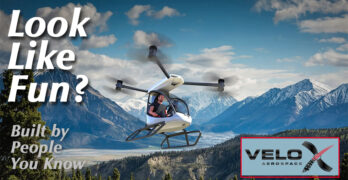Summit Powered Parachutes beat a group of companies working toward the first Special Light-Sport Aircraft PPC. The Vernon, British Columbia, Canada-based powered parachute producer won their SLSA Airworthiness Certificate on Thursday, April 27, 2006. I flew and reported on the Summit II in the 11/03 edition of Ultralight Flying! Magazine. I found Summit II to be notably different than most other powered parachutes partly due the sliding rudder pedal-like foot controls used to steer the canopy that exhibited fluid action. Last November Summit won German certification in the only such approval by an American company with which I am familiar. This earlier certification may have helped Summit as they prepared for stating compliance to the quite different ASTM standards. Although the powered parachute standard has been done for many months, those producers have not rallied to the new regulation. All that may change now that Summit is out of the gate with their approval.
Search Results for : powered parachute
Not finding exactly what you expected? Try our advanced search option.
Select a manufacturer to go straight to all our content about that manufacturer.
Select an aircraft model to go straight to all our content about that model.
Buckeye Powered Parachutes — Falcon 582
One of the ultralight Industry’s most interesting types of aircraft is the powered parachute. What might surprise you look is the sales success of these machines. Buckeye Powered Parachutes enjoyed a record year in 1995, and a report selling 70% of their production to folks who have never flown before. All of Aviation – take note! In case you think this is still a niche segment, be advised Buc that Buckeye and other power parachutes comprised one in 10 of all all ultralight sales.
The reason for Buckeye’s success includes a safe appearance (“you’re already under a canopy”), ease of operation, docile flight characteristics, and maybe most importantly, its perception as a fun flying machine. And a powered parachute can be carried on a very small trailer and stored just about anywhere.
The Falcon 582 is beautifully built with an overall polish that immediately makes you think well of it. Buckeyes come well-equipped with instruments and have a solidly-built control systems.
Powered parachutes are on the rise
For years, I’ve said that we misnamed the class of aircraft we call ultralights. We should call them ultraslows, because that’s what they do well-fly slowly.
Powered parachutes prove this point perfectly. One look at the 22 brands sold in the U.S. will tell you that they are robustly built-some weigh more than 400 pounds empty! Weight discussions virtually ignore the wing, but it’s the wing and its rigging to the carriage that dictate a parachute’s speed.
Powered parachutes are excellent at flying slowly. They take off, cruise, and land at about the same speed: 26 mph on average.
A Misunderstood Machine
When I first tried a powered parachute, I didn’t get it. Why would any one want to fly something so slow and unmaneuverable?
I prefer flying at slower speeds, so I wasn’t questioning the slow cruise speed. I objected to the one-speed-fits-all approach, equating this to a lack of ability to maneuver out of situations.
Gemini Powered Parachutes Come From Experience
According to the new Ultralight Flying! “Ultralight and Microlight Buyer’s Guide,” 24 companies are building powered parachutes in 2003. That figure doesn’t include recently announced foreign competitors and doesn’t count all that may follow. How does a new company stand out in such a crowd?
Gemini Industries boss Randy Snead is a well-known personality among powered parachute enthusiasts. He was the main technical person with Buckeye Industries, working with FAA personnel for months in pursuit of Primary Category certification. In blazing that new trail, Snead earned a reputation as being serious and knowledgeable.
His business enterprise is new to the scene, but given Snead’s long experience in this segment of light aviation, Gemini Industries should prosper. I see the company surviving any industry shakeout as the Indiana company keeps its overhead low and offers reliable products at low prices with reasonable delivery times. Gemini Industries isn’t flamboyant like some powered parachute producers and that’s exactly why Gemini’s formula should work.
Destiny Powered Parachutes
In recent months, several industry observers have noted that powered parachutes’ sales appear to be stronger than fixed-wing sales. Many visitors count a large number of powered parachute manufacturers at airshows. Insiders hear rumors about the large volume of engines these companies are buying. Perhaps you’ve even said, “There’s one flying at my home field now.”
Much like trikes before them, the sales of powered parachutes (and powered paragliders) seem to be increasing. Most new flying machine types have their day, and currently powered parachutes appear to be enjoying a great run.
Growing Segment
Despite the fact that the planet supports only a couple million pilots, aviation is highly segmented. Flyers in America enjoy the broadest choices imaginable with aircraft of every description. This incredible diversity is vast enough that we tend to focus only on the types of flying machines that interest us (or that we can afford).
The concept of a parachute (canopy) acting as your wing isn’t particularly new.
ASAP — Summit Powered Parachute
After saving two leading Canadian ultralight designs, refining, building, and marketing the Chinook and Beaver 550, plus operating their successful machine shop enterprise, they also started producing their own powered parachute, the Summit. And as they did with the other ultralights, they made changes to bring improvements they felt were needed.
ASAP changed the control system from the standard foot-tubes that create lateral control on most powered parachutes. Summit uses “foot platforms.” Accessible only to the front seat pilot, the platforms (like rudder pedals) effect a turn in the direction pushed. When you push on one platform it slides on a rail to input the control to the canopy trailing edge.
Steering on the ground also takes a new turn. Instead of a joystick-type control common to other brands, the Summit employs a control wheel that moves the nosewheel only. A lever on this yoke activates a nose drum brake.
Summit supports its parachute canopy from four points, not unlike the Para-Ski but quite differently than most powered parachutes which suspend from a couple common points.
Powered Sport Flying magazine
Hybrid Powered Chute
As focus sharpens on FAA’s proposed Light-Sport Aircraft regulation, the first aircraft segment to complete an ASTM airworthiness consensus standard is powered parachutes. While these aircraft are simpler, which helped speed the process, participating manufacturers got together well and hammered out their certification rules efficiently.
Summit Powered Parachutes of Canada hasn’t yet chosen to enter the Light-Sport Aircraft arena. They aren’t worried, just wary of new regulations. In fact, the company started work under England’s BCAR S regulation. Just recently, Summit was working to qualify for German DHV certification. They see no great challenge passing the proposed U.S. powered parachute standards, as currently defined.
Fortunately, the proposed Light-Sport Aircraft is not the only destination in sport aviation. It may be part of the spectrum of aviation regulations.
We’re seeing more new designs tuned to Part 103. And the Amateur-Built 51% rule will still allow many 2-seat ultralights to be built and flown as they are today.
Infinity Power Parachutes
On a warm summer evening, a large field of 3-foot-tall oats sways gently in the breeze. In this pastoral setting a runway is cut down the middle. The farmer who owns this field has a light aircraft he flies from his country property, and he’s kind enough to allow Tim Norling, a local powered parachute pilot, to use it, too. Norling operates Let’s Fly, an Infinity powered parachute dealer 20 miles north of Minneapolis, Minnesota.
By the time Norling gets his Infinity powered parachute set up, the winds have quieted down, as we hoped they might. It is a beautiful evening for flying in Minnesota, and I am ready for a flight.
Some pilots say, “Oh, those powered parachutes are too vulnerable. You can only fly them in gentle winds.” Yeah, so? Is it really imperative to fly in strong winds? Is being restricted to mild conditions a bad thing?
Powered parachutes tend only to be flown when it’s pleasant to do so.
A Multicopter Current Pilots Might Enjoy? …Developed Within Our LSA Industry
Here’s a helicopter-like aircraft you might actually consider. I have often reviewed what I call multicopters (several articles). I searched for aircraft you might fly for fun; several of them can enjoy the freedom and special benefits of Part 103. I’ve stayed away from commercial “air taxi” projects.
But what if a longtime producer of Light-Sport Aircraft entered the space? What if the aircraft looked like a helicopter but one you could fly without the steep learning curve? What if it offered 45 minutes of flight with a 15-minute reserve?
The earliest entries had short flight times, 15-20 minutes. Most of them cost too much. For example, Opener’s Blackfly (now called Helix) was first promoted at the cost of a “luxury SUV,” perhaps meaning $80,000 at the time. It has since more than doubled in price.
You may doubt or dislike these flying machines, especially when you don’t know the people behind the projects.
- « Previous Page
- 1
- 2
- 3
- 4
- …
- 45
- Next Page »


